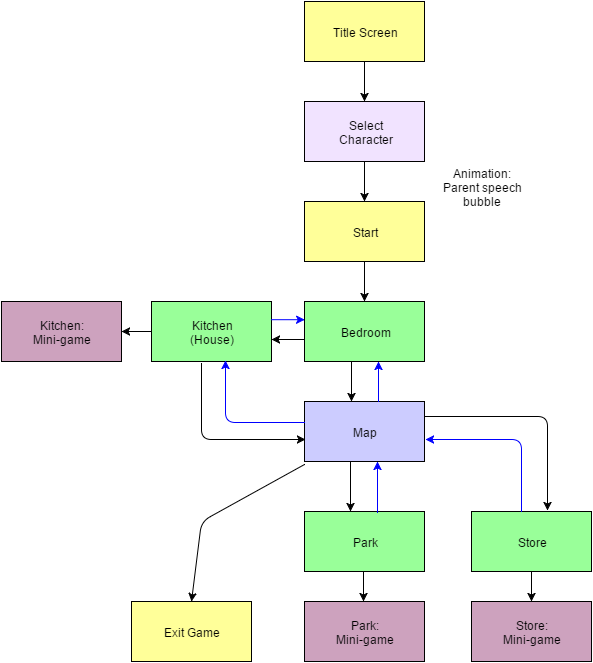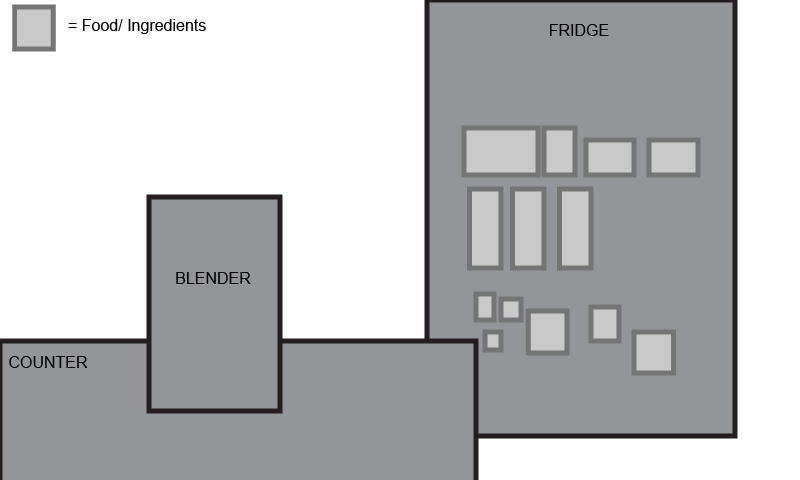
Calypso
Children's game about life balance and games
About the project
MediaSmarts contacted University of Waterloo Stratford campus wanted students to create a game for educational purposes. They wanted our team to deliver the topic of the relationship between games and children's well-being.
With iterative design processes we created a high-fidelity prototype, website, and with educational video content for both parents and children to be aware of.
Note: This was an academic group project. The client had the right to use or discriminate ideas of students based on the result. As well, the prototype was completed unfinished; hence, cannot guarantee the quality of the game. This is only a concept !
My role
-
UX designer
I was responsible for many phases of the design process including; research, wireframing, user testing, and visual design with project manager, game developer, and other UX and visual designers.
-
Animator & video editor
I took the team's video storyboard document into life by creating a short educational video for parents about the topic of games in children's life. I was wholly responsible for video production.
Electronic game industry plays a large role in the society and children.
Video and other online games are multi-billion industry. With ease of accessibility to technology, electronic games are widely available to everyone, including children. As a result, games are negatively affecting cognitive development of juveniles.
Our goal was to increase awareness for children who play video games about how and why they should balance their daily life with gaming and other activities to prevent further addiction and other problems through a game and video.
Design process
We mainly focused on user-centered design process to empathize with users.
Our design process can be categorized into 5 parts:
User Research
Sources and user information were provided by MediaSmarts
Ideation
Iterative brainstorming, sketching and discussions about types of games to be created
Storyboard
& User flow
Identifiying flaws and understanding story line and game flow
User Testing
Validating prototypes and receive feedbacks from users with different perspectives about our game
Prototype
Wireframing, designing visual assets and developing a workable game prototype
Reminiscing our childhood days...
On a large piece of paper our team sketched and wrote keywords. I came up with an idea of creating a game where the young user will have to control an avatar. The initial goal of the game is similar to that of Tamagochi, where the user have to feed and take care of the avatar to prevent it from dying.
The team then decided to go with this idea and instead of feeding, the user will have to complete different mini games to complete tasks and keep the character's health and happiness balanced. We believed that the avatar would become a representation of the user which can relate to their daily lives.

...Next, our game needed a story.
The game had numerous components because it consisted of mini games and different scenes. I initiated a story line with the team. This was crucial for users had to understand why the character is in that environment (playing video game at the start of the game).
Storyboarding also helped identify any flaws within the game that disrupts the story line. Moreover, we were able to eliminate or alter the environment based on the story.
Later a user-flow diagram was created to enhance our understanding of the game flow.




We got our things down and was ready to test it. But before validating...




I created few wireframes and illustrations for the game. I also designed different environments and objects necessary for user interaction. Visuals played an important role here because we had to focus on creating a 'futuristic' mood.
In the following week, the team presented the prototype to the to a guest lecturer and the professor. We had a feedback from them stating that the mall scene where the avatar is supposedly shopping was ineffective because the environment itself felt lonely. As a result, I created a library scene, a sub-character, and a new mini game to avoid the feeling of loneliness in the game.
...We wanted to see and hear what users had to say.
Our team had few users testing our prototype. Beforehand, the team created a script with questions that were going to be used during the test. Apparently, the team received more information and feedback when asking the users in a conversational tone.
The biggest flaw in the usability testing was that there were no users of the age of 10 to 13. However, we had one to two children come play, and although they were also confused they seemed to enjoy the mini games.

From our observation:

-
The game needed more instructions or a quick walk-through. Many users were confused at the start of the game
-
Navigation was difficult to find, including what to click to exit/ enter a room
-
Micro-feedback should be encouraged in every object, such as arrow pointing at an object when hovering
-
The game lacked reward. Meaning that player would easily get bored. We resolved it with a responsive pop-up that stated avatar's emotion and thought.
-
EVERY user missed the location of the map
-
Ending transition was confusing. At this point, we only had one ending saying, "You didn't balance your bars! Try again"
Conclusion & takeaways
It turns out that what MediaSmarts had in mind was quite different than what our group had in mind about the definition of life balance and video games. Nevertheless, I have realized the importance of usability testing and how to implement negative feedback to improve the project. This was such an enjoyable game design project I have collaborated (and I have taught myself how to animate 2D objects within few days, so that is a big plus for me)!
Video games can be a solution to a problem, just like this project. However, the continuous development of violent video games and the media addressing these games as entertainment will still be an issue for parents and adolescents. If Calypso had more time (and money), this could have been an awesome fun game for educating little children.